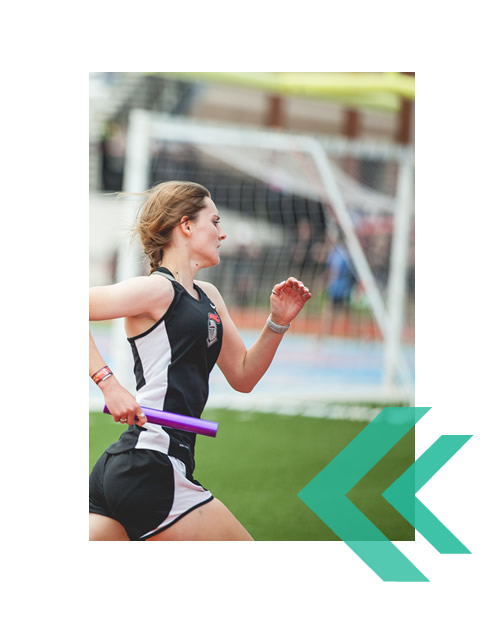The Story
 Heidi Skolnik started her career 35 years ago working with renowned sports teams – like the New York Giants, the New York Knicks and New York Mets – and brought the sports nutrition model to performance artists as she oversees the nutrition programs for the Juilliard School and the School of American Ballet. Heidi has been privileged to be a part of The Women’s Sports Medicine Center at the Hospital for Special Surgery, which opened in 1997 as the first of its kind in the country.
Heidi Skolnik started her career 35 years ago working with renowned sports teams – like the New York Giants, the New York Knicks and New York Mets – and brought the sports nutrition model to performance artists as she oversees the nutrition programs for the Juilliard School and the School of American Ballet. Heidi has been privileged to be a part of The Women’s Sports Medicine Center at the Hospital for Special Surgery, which opened in 1997 as the first of its kind in the country.
It was the late 1980’s when Heidi attended the annual American College of Sports Medicine conference and heard Dr. Barbara Drinkwater speak of the relationship between female athletes’ fueling practices, menses and bone health. It was a theory Dr. Drinkwater had, and she was conducting research to sort out the interconnections. Thus, The Female Athlete Triad was born.
Relative Energy Deficiency in Sport (RED-S), The International Olympic Committee’s creation to expand on The Triad and include males, was introduced in 2014. Research continues on both models to elucidate the interconnections between adequate fueling on health and performance for both sexes.
 This past year as Heidi attended FNCE (The Academy of Nutrition and Dietetics Food and Nutrition Conference and Expo) and sat in on session after session on the TRIAD and RED-s. It was clear that its time has come. Sessions were packed. Practitioners were hungry for information to better understand the topic. For some, the information was all new. For others, already practicing with athletes, they looked to further their understanding, stay abreast of current research, and grasp any clinical pearls to apply the knowledge.
This past year as Heidi attended FNCE (The Academy of Nutrition and Dietetics Food and Nutrition Conference and Expo) and sat in on session after session on the TRIAD and RED-s. It was clear that its time has come. Sessions were packed. Practitioners were hungry for information to better understand the topic. For some, the information was all new. For others, already practicing with athletes, they looked to further their understanding, stay abreast of current research, and grasp any clinical pearls to apply the knowledge.
Heidi saw the need and created The ATHLETE TRIAD PLAYBOOK, Relative Energy Deficiency in Sports to fill that need, a tool to help practitioners help athletes correct low energy availability, hormonal suppression, and to help build strong bones. 40+ downloadable handouts covering Triad/Red-S related topics, nutrients, interactive activities and sports nutrition. No need to re-invent the wheel, these handouts have all been reviewed by second readers to ensure accuracy and have been graphically designed to look appealing and professional.
Heidi has been working with athletes for 30 years as she has helped her clients at the Women’s Sports Medicine Center, The Juilliard School and The School of American Ballet, in both sexes and all types of athletes, from runners to crew, from skaters to swimmers, cyclists and field hockey players and, of course, dancers. Some sports are higher risk for the Triad/RED-S, but no sport or athlete is immune.
Female athletes traditionally have not had the attention or funding for research to best understand how their bodies differ from men: structurally, hormonally, physiologically. From the Q Angle and ACL tears, to menstruation, hydration, and what and how they might burn fuel differently, it is important to continue the attention and efforts to understand, study and therefore appropriately treat the female body and the female athlete.
Yet, the message of the Female Athlete Triad, born by the inquisitive Barbara Drinkwater and continued by the Female Athlete Coalition of the ACSM, magnified by RED-S and IOC and now inclusive of males, has taken years and years to come into the spotlight, to move from physiologists and sports medicine doctors to sports dieticians, pediatricians, athletic trainers, and coaches.
